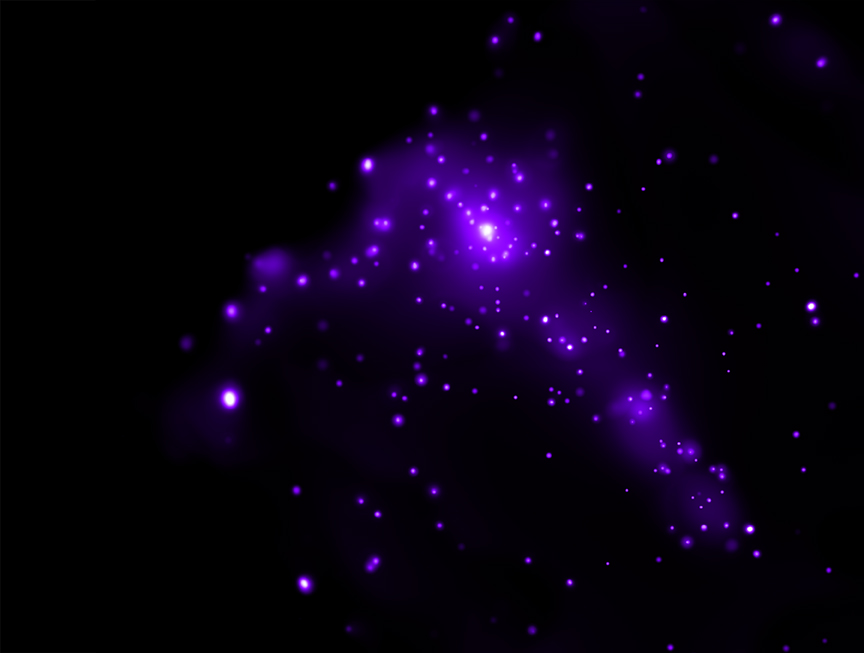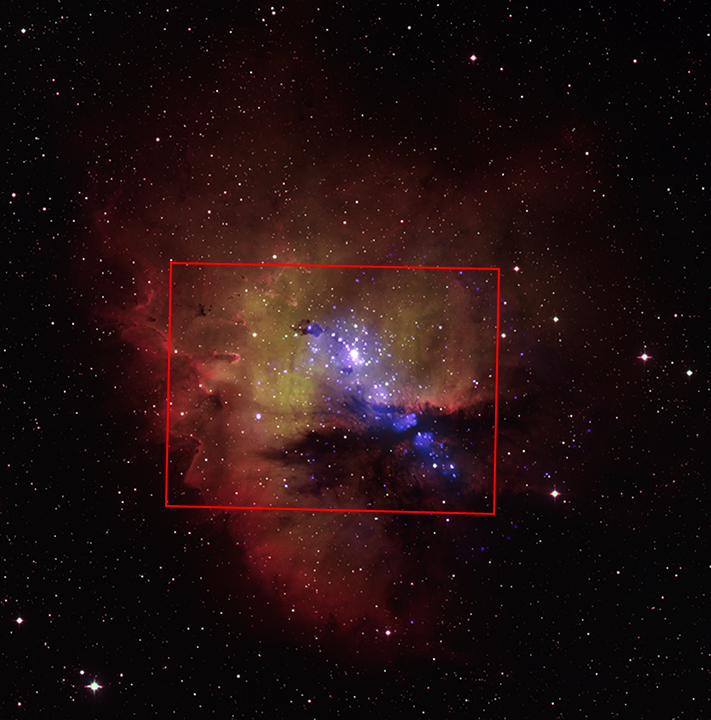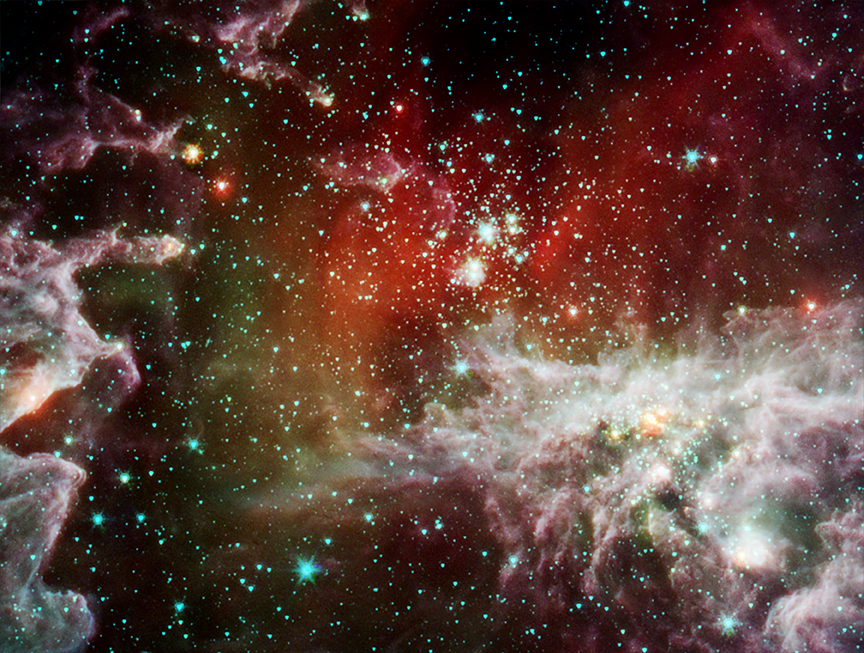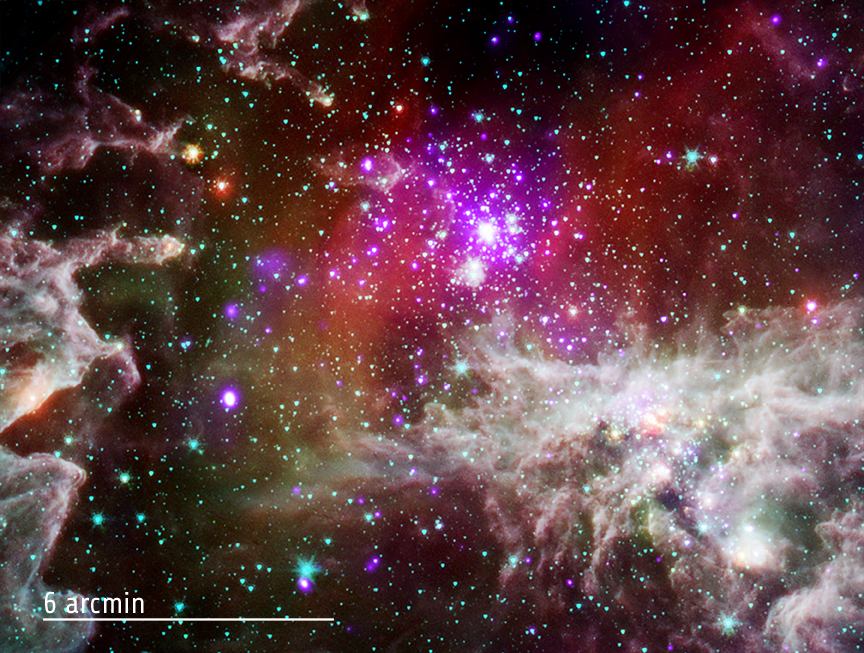Difference between revisions of "Chandra"
| Line 1: | Line 1: | ||
=Data information from Chandra= | =Data information from Chandra= | ||
| + | The following images are retrieved from: http://chandra.harvard.edu/photo/2011/ngc281/more.html with additional credit due to: X-ray: NASA/CXC/CfA/S.Wolk; IR: NASA/JPL/CfA/S.Wolk | ||
| + | =X-ray & Infrared Images of NGC 281= | ||
| + | These images of NGC 281 show X-ray data from Chandra and infrared observations from Spitzer. The high-mass stars in NGC 281 drive many aspects of their galactic environment through powerful winds flowing from their surfaces and intense radiation that heats surrounding gas, "boiling it away" into interstellar space. This process results in the formation of large columns of gas and dust, as seen on the left side of the image. These structures likely contain newly forming stars. The eventual deaths of massive stars as supernovas will also seed the galaxy with material and energy. | ||
[[File:ngc281_xray.jpg]] | [[File:ngc281_xray.jpg]] | ||
| + | =X-Ray= | ||
| + | [[File:ngc281_ir.jpg]] | ||
| + | =Infrared= | ||
| + | |||
| + | |||
| + | =Comparison of Optical and Infrared Images of NGC 281= | ||
| + | This graphic compares optical and infared images of the central region of NGC 281, known informally as the "Pacman Nebula". In the optical image the "mouth" of the Pacman character appears dark because of obscuration by dust and gas, but in the infrared Spitzer image the dust in this region glows brightly. X-ray data from Chandra is shown in purple in both. | ||
| + | The optical and X-ray image on the right shows a large-field optical image with the Chandra data (as released in 2007). The red box represents the smaller field of view for the 2011 release. | ||
| + | [[File:ngc281_old.jpg]] | ||
| + | =NGC281 optical full field= | ||
| + | [[File:NGC281_compare.jpg]] | ||
| + | =NGC281 2011 area of new release= | ||
| + | |||
| + | [[File:ngc281_scale.jpg]] | ||
| + | =NGC281 with scale= | ||
| + | |||
=retrieved from: http://chandra.harvard.edu/photo/2011/ngc281/more.html= | =retrieved from: http://chandra.harvard.edu/photo/2011/ngc281/more.html= | ||
Revision as of 10:01, 16 March 2013
Contents
Data information from Chandra
The following images are retrieved from: http://chandra.harvard.edu/photo/2011/ngc281/more.html with additional credit due to: X-ray: NASA/CXC/CfA/S.Wolk; IR: NASA/JPL/CfA/S.Wolk
X-ray & Infrared Images of NGC 281
These images of NGC 281 show X-ray data from Chandra and infrared observations from Spitzer. The high-mass stars in NGC 281 drive many aspects of their galactic environment through powerful winds flowing from their surfaces and intense radiation that heats surrounding gas, "boiling it away" into interstellar space. This process results in the formation of large columns of gas and dust, as seen on the left side of the image. These structures likely contain newly forming stars. The eventual deaths of massive stars as supernovas will also seed the galaxy with material and energy.

X-Ray
Infrared
Comparison of Optical and Infrared Images of NGC 281
This graphic compares optical and infared images of the central region of NGC 281, known informally as the "Pacman Nebula". In the optical image the "mouth" of the Pacman character appears dark because of obscuration by dust and gas, but in the infrared Spitzer image the dust in this region glows brightly. X-ray data from Chandra is shown in purple in both.
The optical and X-ray image on the right shows a large-field optical image with the Chandra data (as released in 2007). The red box represents the smaller field of view for the 2011 release.


